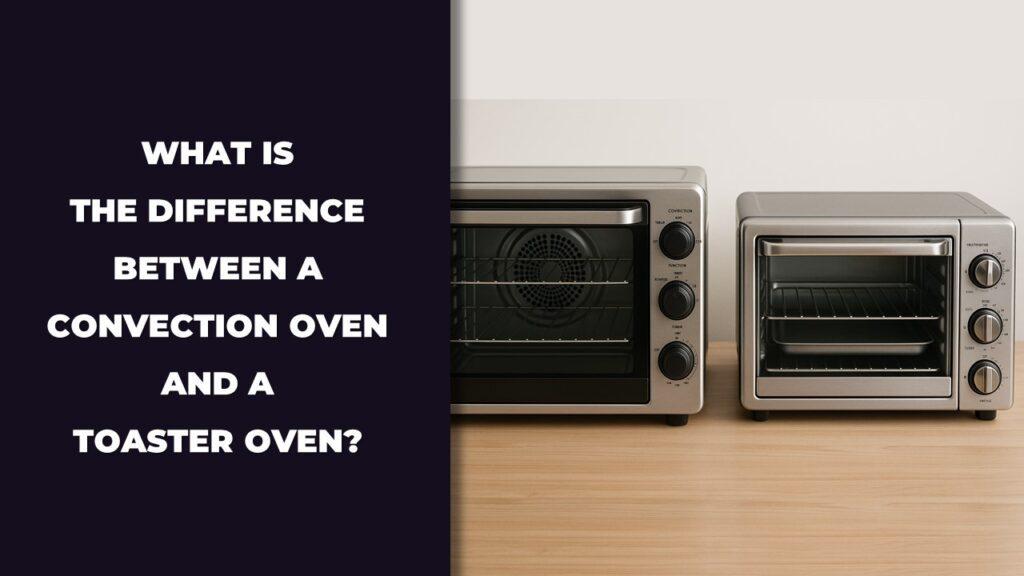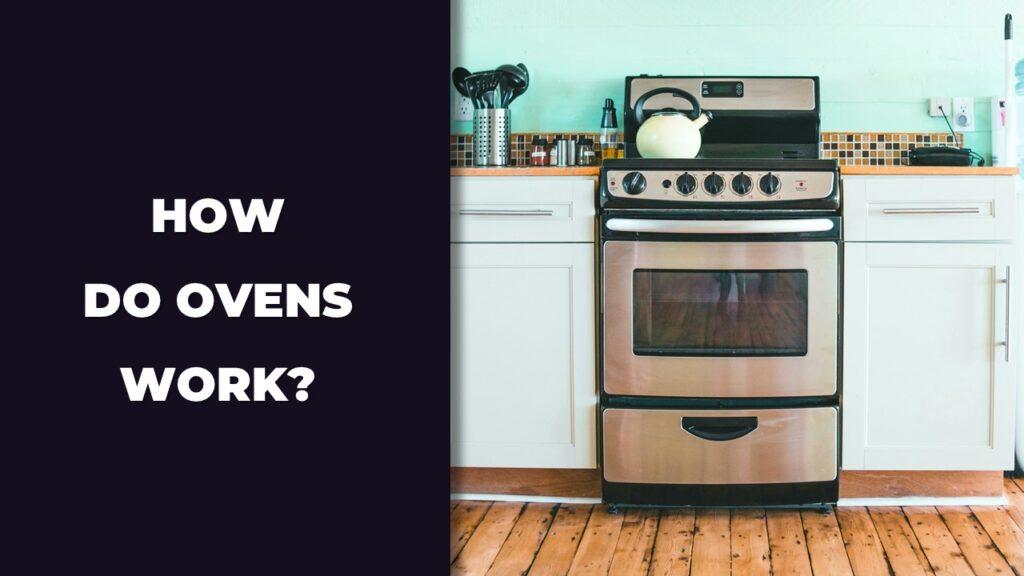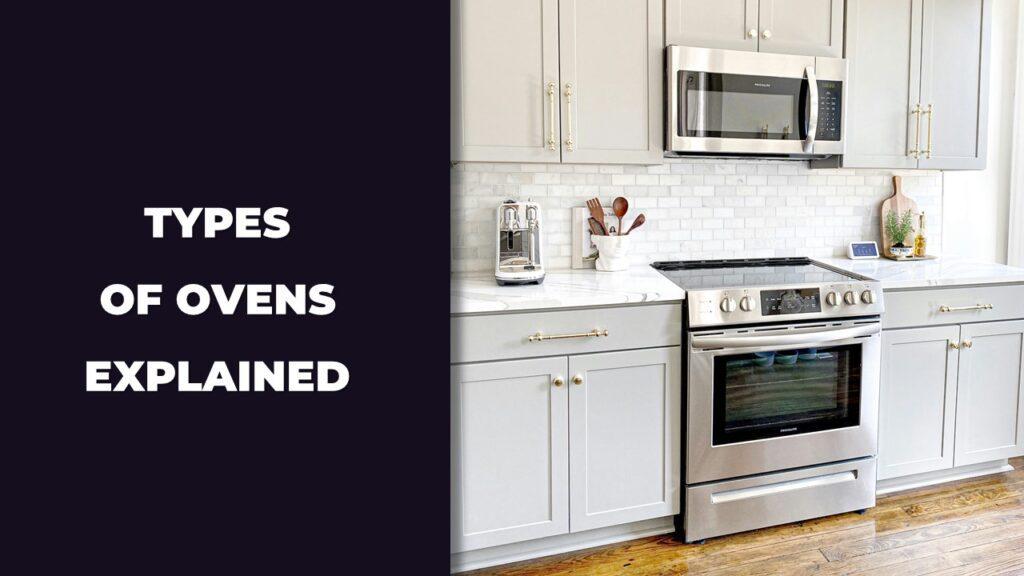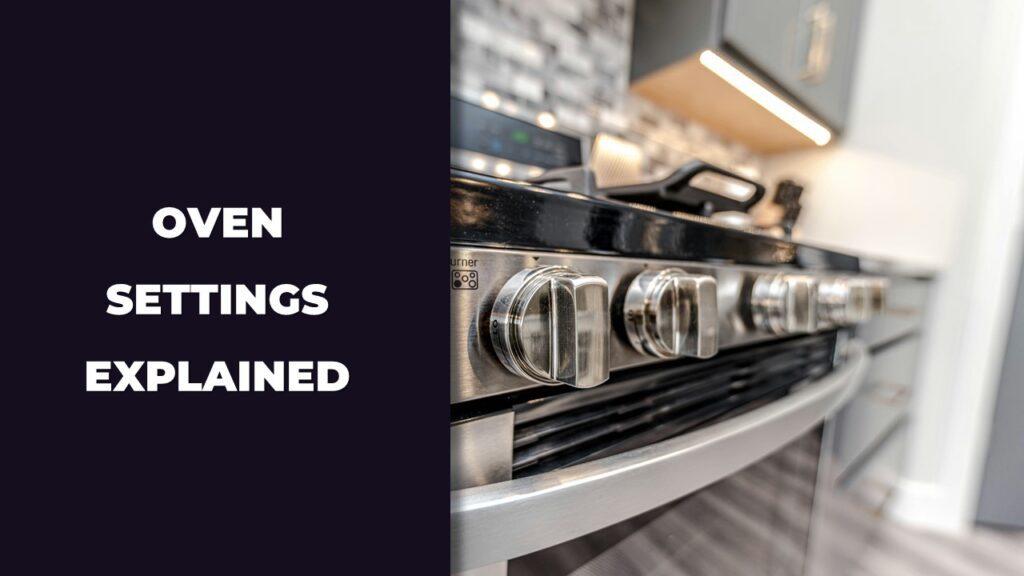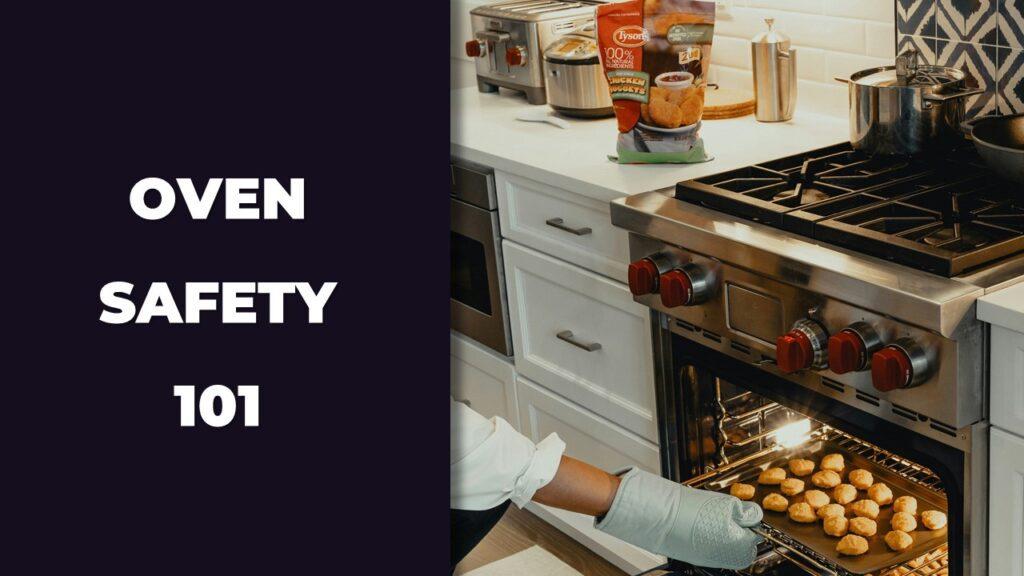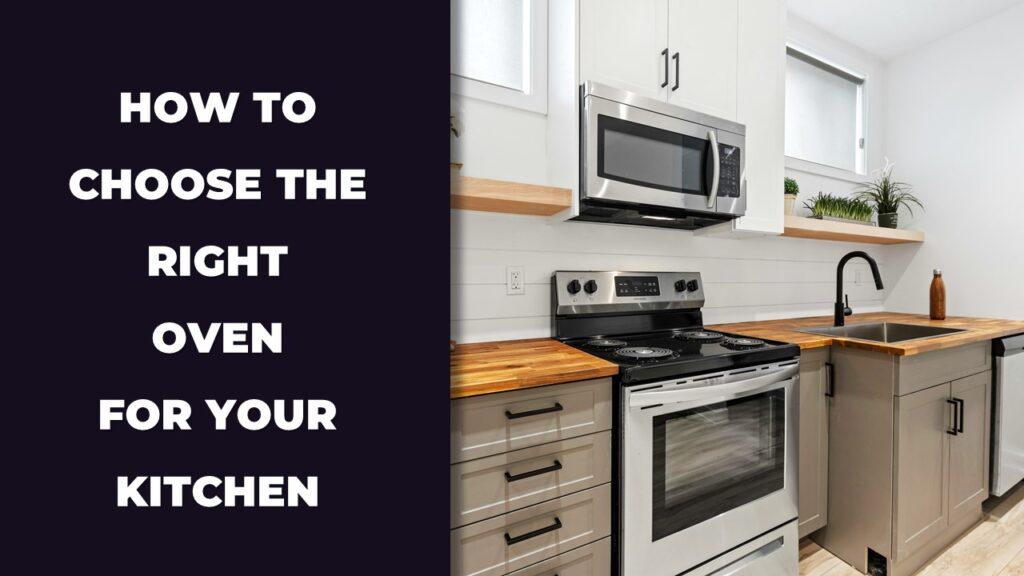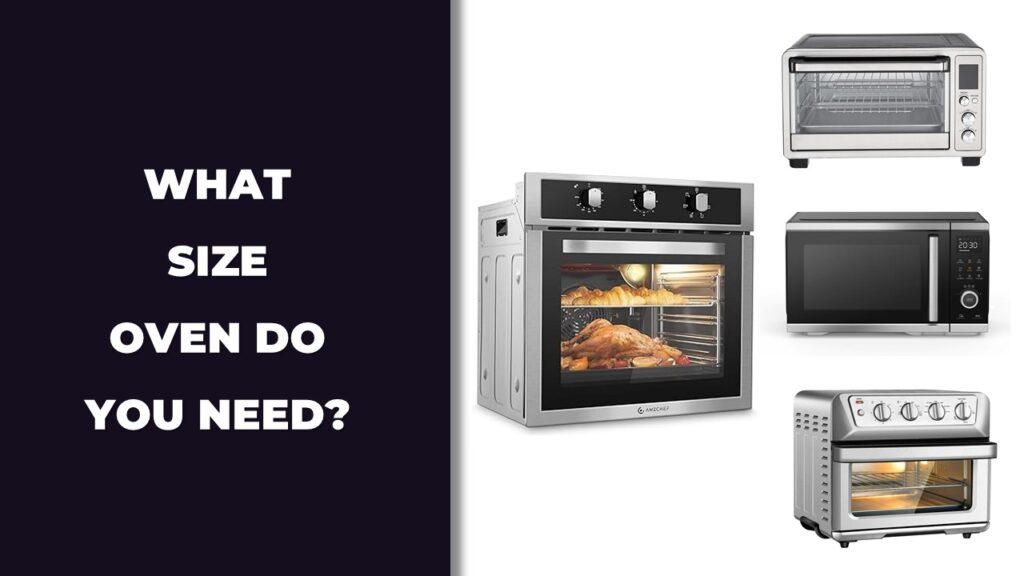
If you live alone or cook for two, a 30 to 40-liter oven usually does the job. For a family of 3 to 4, aim for 50 to 70 liters. Bigger families or frequent hosts should look at 70 liters and up for more space and flexibility.
In this post, you’ll learn how to choose the right oven size based on how many people you cook for, your kitchen space, and your cooking habits. No fluff, just real talk to help you buy what actually fits your life.
Quick Oven Size Guide By Household Type
Most singles need a 20–40L oven. Couples do well with 30–50L. Families of 3–4 need 50–70L, while larger households or frequent entertainers should look for 70L to 125L ovens, depending on how often and how much they cook.
| Household Type | Ideal Capacity (Liters) | Oven Types to Consider |
| Single | 20–40L | Compact, OTG, Small Countertop |
| Couple | 30–50L | Mid-size OTG, Built-in Compact |
| Small Family (3–4) | 50–70L | Convection, Single Built-in |
| Large Family (5+) | 70–125L | Double Oven, Large Built-in, 90cm+ |
| Entertainers | 90–125L | Steam, Dual Oven, Gourmet Range |
Why Oven Size Really Matters?
Oven size isn’t just about how many liters it holds. It affects what you can cook, how efficiently you cook, and how smoothly your kitchen runs—especially during busy mealtimes.
A smaller oven might seem fine until you try roasting a whole chicken and realize your baking tray doesn’t fit. Or maybe you want to bake cookies and a casserole at the same time, but there’s only one rack. These little frustrations can pile up fast.
On the flip side, an oven that’s too big might heat up space you never use, wasting energy and time, especially if you’re only reheating leftovers or baking for one.
Matching the oven size to your lifestyle means less juggling, less guessing, and more cooking that just works. Whether you cook daily or only on weekends, size plays a bigger role than most people think.
Oven Capacity Explained: Liters vs Dimensions vs Usable Space
Oven capacity is measured in liters, but that number doesn’t always reflect how much you can actually cook. You also have to consider the oven’s external dimensions and the way the inside is laid out. Two ovens with the same capacity can feel very different when you actually start using them.
What Oven Capacity (Liters) Actually Means
When an oven says it’s 60 liters, that includes every corner inside—even the space you’ll never use. It’s like measuring a backpack by every inch of fabric, not just the usable pockets.
If you’re cooking for one or two people, 30 to 40 liters is usually enough. For small families, 50 to 70 liters gives you more flexibility with baking and roasting. For bigger families or frequent cooks, go for 70 liters or more so you’re not always shuffling pans around.
External Dimensions in Inches and CM
Ovens are also sized by their outer measurements, which helps you figure out if it’ll fit in your kitchen. Most standard built-in ovens are:
- Width: 24 to 30 inches (60 to 76 cm)
- Height: 27 to 29 inches (68 to 74 cm)
- Depth: About 24 inches (61 cm)
Compact ovens are around 24 inches wide. Large models or gourmet ranges can be 36 inches or wider. But remember, a bigger outside doesn’t always mean much more usable space inside.
Why Size Doesn’t Guarantee Functionality
A 75-liter oven with only one rack isn’t as useful as a well-designed 65-liter oven with two shelves and good airflow. It’s not just about volume—it’s about how the oven handles cooking.
Look for features like:
- Multiple rack positions
- Convection or fan-forced heating
- Wide enough trays to fit your pans
- Interior lighting and good visibility
Even a smaller oven can work better if it’s built smarter.
Oven Size Recommendations Based On Real-Life Scenarios
Choosing oven size isn’t just about how many people live in your house. It also depends on how often you cook, what kind of meals you make, and how much space you have.
Single Or Minimal Cookers
If you live alone or rarely cook, a 20 to 40-liter oven is usually enough. These are perfect for reheating, small bakes, and frozen food. They’re compact, save energy, and don’t take up much space.
A small OTG or countertop convection oven works great here.
Couples And Apartment Dwellers
For two people who cook a few times a week, look for something around 30 to 50 liters. This size can handle baked chicken, casseroles, and desserts without hogging counter or cabinet space.
A built-in compact oven or mid-sized convection unit is a good fit.
Families With 3–4 Members
A family that cooks most nights will want something in the 50 to 70-liter range. You’ll need the extra space for baking, roasting, or cooking two things at once.
A standard built-in convection oven with two racks works well here. Just make sure it has good heat distribution so you don’t have to rotate trays.
Large Families (5+), Frequent Hosts
Cooking for five or more? Hosting dinners often? You’ll need a 70 to 125-liter oven. Think double ovens, wide 90cm models, or ranges with convection and steam options.
These give you room to cook big meals without playing tray shuffle. Great for big gatherings, meal prep days, or just making dinner without feeling cramped.
Matching Oven Size To Kitchen Layout
The size of your kitchen can seriously affect what kind of oven makes sense. A small apartment kitchen doesn’t need (and probably can’t fit) a 90-liter double oven, while a big open-plan kitchen might feel empty with a tiny compact one. The key is to find the right balance between space and how you actually cook.
Small Kitchens Or Studios
If you’ve got a tight space, every inch matters. Go for compact ovens between 20 and 45 liters. These are often countertop models or built-in units that fit into narrow cabinets. Some even double as microwaves or grills.
Look for features that save space: front-opening doors, combination cooking modes, or multi-level trays. You still get plenty of function, just in a smaller footprint. Perfect for apartments, dorms, or minimalist kitchens.
Medium Kitchens
This is where most people land. You probably have enough cabinet room for a standard 60 to 70-liter oven, either built under the counter or into a wall unit. It gives you solid cooking capacity without dominating the room.
If you cook a few times a week for your family, this size hits the sweet spot. You’ll be able to roast, bake, and use multiple trays—without needing a full remodel.
Large Kitchens / Renovated Spaces
If you’re lucky enough to have a roomy kitchen—or you’re designing one from scratch—you’ve got options. Ovens in the 70 to 125-liter range work best here. Think 90 cm-wide built-ins, gourmet freestanding ranges, or even double ovens stacked together.
This setup suits big families, frequent hosts, or serious home cooks. You’ll have space to cook several dishes at once, and enough flexibility for any recipe. Plus, big ovens just feel right in big kitchens.
Common Oven Types And Their Size Ranges
Ovens come in different types and sizes, and each fits a certain kind of cook and kitchen. Here’s a quick look at what you can expect based on the type of oven you’re considering.
| Oven Type | Typical Capacity (L) | Ideal For |
| OTG (Oven Toaster Griller) | 10–40L | Singles, light users |
| Convection (Countertop or Built-in) | 30–70L | Families, daily cooking |
| Wall Oven (Single) | 60–80L | Most standard homes |
| Wall Oven (Double) | 90–125L | Entertainers, large households |
| Freestanding Range | 60–125L | Full kitchen setups, flexible use |
| Steam + Convection | 60–125L | Health-focused, gourmet cooking |
Whether you’re heating leftovers, roasting a whole chicken, or baking sourdough on the weekend, there’s an oven type that fits your cooking style and your kitchen. It’s not about having the biggest one—it’s about having the right one for how you live and cook.
How To Measure Your Space Before Choosing An Oven
To find the right oven size, you’ll need to measure the space where it will go. Sounds simple, but it’s one of those things people rush, and end up with a too-tight fit or no room for the door to open properly.
Here’s how to measure it right:
- Width: Measure side to side, from cabinet edge to cabinet edge. Standard ovens are usually 24 to 30 inches wide, but double ovens or larger ranges can go beyond that. Measure at the narrowest point.
- Height: Measure from the base of the opening to the top. If it’s a built-in space, include any trim or framing. Single ovens are often around 27 to 29 inches tall.
- Depth: Measure from the back wall to the front edge of your cabinet or counter. Leave space for plugs, gas lines, or ventilation—most ovens are around 24 inches deep.
- Clearance for Door Swing: Open the door on your current oven (or imagine it if you’re starting fresh). Make sure there’s room for the oven door to fully open and for you to comfortably place dishes in and out.
- Ventilation Gap: Ovens need space around them for air to move. Check the manual or product page of the model you’re considering to know how much room to leave.
A few extra minutes with a tape measure can save you a lot of headaches later.
Energy Use And Efficiency Based On Oven Size
Bigger ovens draw more power, but they let you cook more food at once. Smaller ovens use less electricity, but only if you’re cooking small portions. If you run a small oven twice to do what a large one could do in one go, you’re not saving much. So it’s less about just wattage, and more about how often and how efficiently you use it.
How To Estimate Oven Running Costs
To calculate how much it costs to run your oven per hour, use this simple formula:
Power (in watts) ÷ 1,000 × time (in hours) × cost per kWh
Let’s say you use a 1500W (medium) oven for 1.5 hours a day, and your electricity rate is $0.15 per kWh.
1.5 kW × 1.5 hours × $0.15 = $0.34 per day
Multiply that by 30 days:
$0.34 × 30 = $10.20 per month
Here’s a quick breakdown:
| Oven Size | Avg. Wattage | Energy Use per Hour (kWh) | Cost per Hour (@ $0.15/kWh) |
| Small | 1000–1500W | 1.0–1.5 kWh | $0.15–$0.23 |
| Medium | 1500–2000W | 1.5–2.0 kWh | $0.23–$0.30 |
| Large | 2000–3000W | 2.0–3.0 kWh | $0.30–$0.45 |
Monthly Cost Examples (Daily Use at 1 Hour)
- Small oven (1.2 kWh × $0.15 × 30 days) = $5.40/month
- Medium oven (1.8 kWh × $0.15 × 30 days) = $8.10/month
- Large oven (2.5 kWh × $0.15 × 30 days) = $11.25/month
If you use your oven daily, energy costs add up. A medium oven that fits your food without wasted space usually hits the sweet spot for both cooking flexibility and electricity use. But if you’re mostly reheating or baking for one, a smaller unit could save a few bucks every month. Just don’t forget to factor in how many times you’re turning it on.
Common Mistakes When Choosing Oven Size
A lot of folks think bigger is always better, or they pick based on looks instead of how they actually cook. Then they find themselves stuck with a setup that just doesn’t fit their routine.
Here are common missteps to avoid:
- Guessing instead of measuring: Eyeballing the space or assuming all ovens are the same size can lead to costly returns or last-minute cabinet changes.
- Buying too big “just in case”: If you rarely cook big meals, a large oven will just cost more to run and heat up. Pick the size you’ll actually use.
- Focusing only on liters: A 70-liter oven sounds great, but if it only has one rack or poor heat flow, it’s not much help. Look at shelf layout and interior shape.
- Ignoring how you cook: Someone who batch bakes every Sunday needs a different oven than someone who mostly reheats takeout. Be honest about your habits.
- Skipping ventilation and power checks: If your kitchen isn’t wired for a high-powered oven or doesn’t have space to vent heat properly, you could run into trouble.
Choosing the right oven isn’t about getting the fanciest one. It’s about finding something that fits your kitchen and makes cooking feel easier—not frustrating.
Final Verdict
Choosing the right oven size depends on your household size, kitchen space, and cooking habits. A 30 to 40-liter oven is great for singles or couples, while families of 3 to 4 usually need something in the 50 to 70-liter range. For larger families or people who love to host, an oven with 70 liters or more can make meal prep smoother and faster.
It’s not just about the liters. You need to look at internal layout, the number of shelves, and whether it fits your pans. Think about how often you cook, what you usually make, and whether you’ll use features like convection or steam. Matching size to lifestyle means fewer cooking struggles and less energy wasted.
When you get the oven size right, your kitchen works better. You can cook meals in one go, clean up faster, and actually enjoy the process. Whether you’re baking bread every weekend or just warming leftovers, the right oven can make daily life a little easier.
Related FAQs
Is a 30L oven big enough for baking?
Yes, a 30-liter oven is suitable for basic baking like cakes, cookies, or small loaves. Just avoid large trays or multi-rack bakes.
What size oven fits a full-size turkey?
You’ll need at least a 70-liter oven to comfortably fit a full-size turkey and still have room for airflow and browning.
Can I use a large oven in a small kitchen?
You can, but it depends on layout. Just make sure you have enough space for the door to open fully and for safe ventilation.
What oven size do I need for baking bread regularly?
If you bake often, go for a 50 to 70-liter oven. It gives you room for rising loaves and supports consistent temperature control.
Is a double oven worth it for daily cooking?
If you cook multiple dishes often or need different temperatures at once, a double oven can save time and simplify your routine.
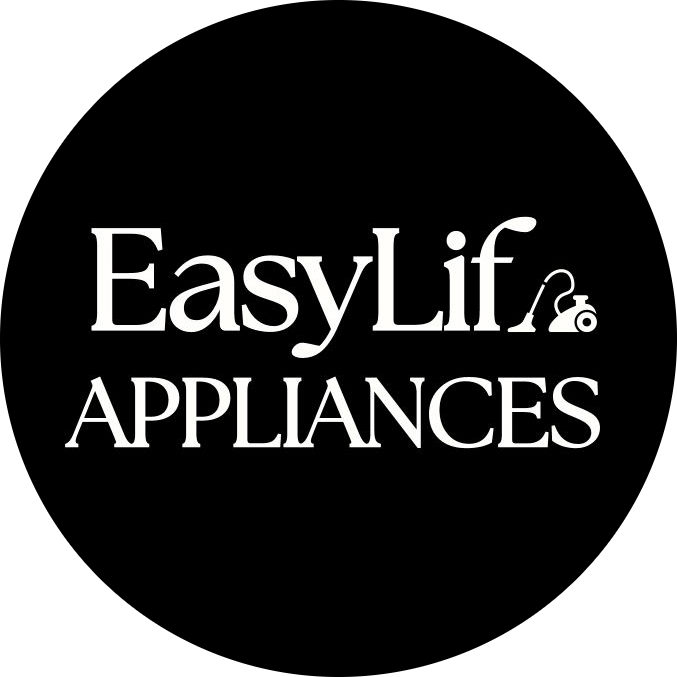
At our core, we’re a group of passionate households and gardening tools and appliances users and enthusiasts. We dive deep into the world of tech, especially when it’s about your household or gardening electric items. We try to provide as much value to the readers with our information and how to blog articles as possible. For affiliate articles our honest and transparent reviews of essential tech products are rooted in real-world experience. We take great satisfaction in offering unbiased evaluations, ensuring that you can make informed decisions when investing in your desired techs.

